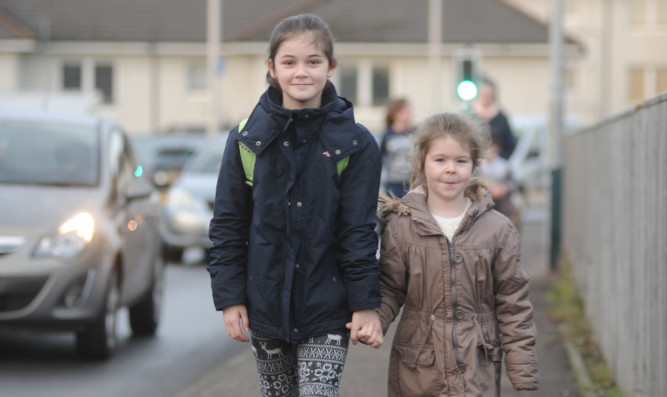An evaluation of 20mph zones introduced on Fife roads in the last decade shows a marked drop in the number of people killed or injured.
Councillors on the region’s safer communities committee heard the safety measures had contributed to casualty numbers falling by a fifth in the years after the new limits were introduced.
Child casualty figures went down by more than a quarter.
The statistics, which looked at the 499 distinct 20mph zones introduced across Fife between 2003 and 2014, go some way towards vindicating the decision to make the areas mandatory with associated Traffic Regulation Orders.
But councillors acknowledged more work needs to be done to curb accidents.
The risk of a pedestrian being fatally injured when hit by a vehicle at 30mph is 5.5% and more than 30% at 40 mph, although the risk reduces to less than 1% at 20mph.
Committee chairwoman Margaret Kennedy said: “The results of the consultation we’re discussing today show significant reductions in traffic speed since we introduced 20mph zones in these areas.
“Slower traffic improves the quality of life for residents and means there are also reductions in child casualty figures in these areas.
“That is an extremely positive result and we’ll continue working with colleagues in Police Scotland and other partners to make sure drivers stick to the limits and keep our roads as safe as possible.”
The evaluation of 20mph zones covers the period 2003 to 2013 and considers casualty figures for a three-year period prior to the introduction of each zone and a three-year period after.
Since the zones were introduced at different times over the evaluation period, each set of three year before and after figures were compiled into a combined before and after data set to give a complete overview.
That revealed the number of casualties fell from 305 in the years before the zones were introduced to 243 in the years after a fall of 20.3%.
The number of fatalities also fell by 100%, from three to zero in that period.
Child casualties, those aged 15 or under, fell from 111 in the years prior to the zones being introduced to just 80 in the years thereafter a drop of 27.9%.
Traffic surveys conducted before and after the zones were implemented confirmed that the 20mph limits had noticeably slowed drivers.
